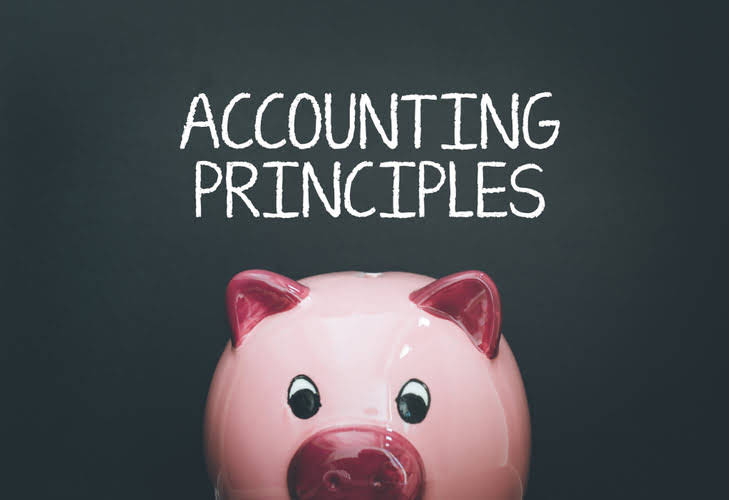Nonprofit Cash Flow Statements

This way, you’ll make sure all your resources are appropriately allocated and all your reporting is totally transparent. Your nonprofit’s budget is like a financial compass, leading you through the twists and turns of expenses and projected actual revenue for the year. It’s not just a document that gathers dust, but a dynamic tool that you’ll consult time and time again, keeping your organization on track and adapting to its ever-evolving needs. You’re saving the sloths, building homes for the houseless, and curing the climate crisis. But while being a crusader for justice sounds pretty action-packed on paper, the reality is a bit less glamorous. In fact, one of the most important facets of a healthy nonprofit organization is good nonprofit accounting practices.
Nonprofit accounting software
This information is important to help you make sound financial decisions, as well as to meet the requirements of grantors and other funding sources. Cash flow from financing activities – This includes activities relating to receiving money from creditors and paying back creditors. You add up these three sections to get your company’s increase or decrease in cash flow. At the top of your statement you should have a beginning Accounting for Churches balance of cash for the accounting period.
Great Examples of Nonprofit Financial Statements
Here are some recommended books, courses, and software that can provide deeper insights and practical skills in nonprofit financial management. The next crucial step is to identify the assets = liabilities + equity starting point for the cash flow statement, which, in the indirect method, is the net income or change in net assets as reported on the income statement. Yes, different types of nonprofits (e.g., charities, foundations, educational institutions) may have unique cash flow patterns and reporting requirements based on their activities and funding sources. Tailoring the cash flow statement to reflect these specifics can provide more relevant insights. By closely monitoring the businesses operating activities in the SCF, nonprofit leaders can make informed decisions to enhance operational efficiency and ensure financial sustainability. This section not only provides a snapshot of the financial health but also serves as a guide for potential adjustments in management practices.
The Role of Cash Flows in Strategic Planning and Management

A Statement of Cash Flows is crucial as it provides stakeholders—from board members nonprofit cash flow statement to donors and regulatory agencies—a clear snapshot of the organization’s liquidity and financial health. This statement is not merely a record of cash inflows and outflows; it serves as a vital tool for effective financial management. It helps organizations plan for future financial needs, ensuring they have the funds necessary to support their mission and operational commitments. For nonprofits, where funding can be unpredictable and tied to specific projects, understanding and managing cash flows is essential to maintaining stability and trust.

Summary of Key Takeaways
- For example, purchasing new equipment is a cash outflow, while selling property is a cash inflow.
- In other words, revenues might be earned in an accounting period that is different from the period in which the cash is received.
- On the surface, a nonprofit cash flow statement is a representation of the inflows and outflows of cash; however, that cash flow tells a story.
- With Sage Intacct, you’ll spend less time crunching numbers and focusing more on your mission.
- This not only aids in better financial management but also bolsters the confidence of donors, board members, and other stakeholders in the organization’s financial health.
- Funraise has it all—and we mean alllllll—when it comes to building a successful nonprofit, combining everything from donation management and event registration to advanced reporting and recurring giving tools.
- These adjustments are critical as they reflect the actual cash impact of operating activities, which is essential for understanding the liquidity provided by core operations.
It provides a transparent, comprehensive view of cash inflows and outflows across operating, investing, and financing activities. This clarity is essential not only for managing day-to-day operations but also for planning long-term sustainability. A nonprofit’s financial statements tell the story of how successfully it is advancing its mission and sustaining operations.
Financial Statements of Nonprofits

For example, purchasing new equipment is a cash outflow, while selling property is a cash inflow. If your organization currently uses accounting software, like Sage Intacct, then it is likely you can customize a statement of cash flows to be generated each month. Utilizing your accounting software to create financial reports is an accurate method because the report is pulling the data inputted during daily transactions. Staying on top of the financial health of your nonprofit organization can feel like a full-time job, but it doesn’t have to be that way.
- An organization without owners and with the main purpose of providing services needed by society.
- Once finalized, share your financial statements with key stakeholders, like your board of directors, donors, grant-making entities, and the general public, as needed.
- With all those crucial details and differentiators out of the way, you’re ready to manage your finances efficiently and effectively by getting your nonprofit accounting in tip-top shape.
- The Statement of Cash Flows is an indispensable tool for nonprofit managers and board members, facilitating informed decision-making and strategic planning.
- When analyzing the SCF, it is ideal to see positive cash flows coming in that result in a positive ending balance and net change in cash.
- This section will provide recommendations for accounting software that can facilitate the Direct Method and discuss the benefits of using specialized nonprofit financial management tools.
Your size, your activities, and your funding sources will all determine which reports you need to run your business effectively. For that reason, we default to talking about accrual basis accounting in this article. But in a leadership role, you’ll need to understand both audited financial statements and internal reports to communicate effectively with your donors, grant-makers, board of directors, and your team. Understanding and mastering this story empowers you, giving you a sense of control and confidence in your financial decisions. It helps you spot trends, like seasonal dips in income or when expenses tend to spike so that you can plan.
Here is how to systematically list and calculate cash receipts and payments for these activities using the Direct Method. Your cash flow statement can also be used to help you communicate with your stakeholders about your organization’s financial health. For example, if you are looking for new funding, you can use your cash flow statement to show potential funders how your organization is doing. As a nonprofit organization, you will use your statement of cash flows to track the cash coming in and going out of your organization at a high level.
But many times they don’t fully understand what the report is, and what they’re looking for is something that’s not actually in the report. The Statement of Financial Position gives you a snapshot of your financial health by revealing the underlying value of what your organization owns. But in your audited nonprofit financials, it will be called a Statement of Financial Position.